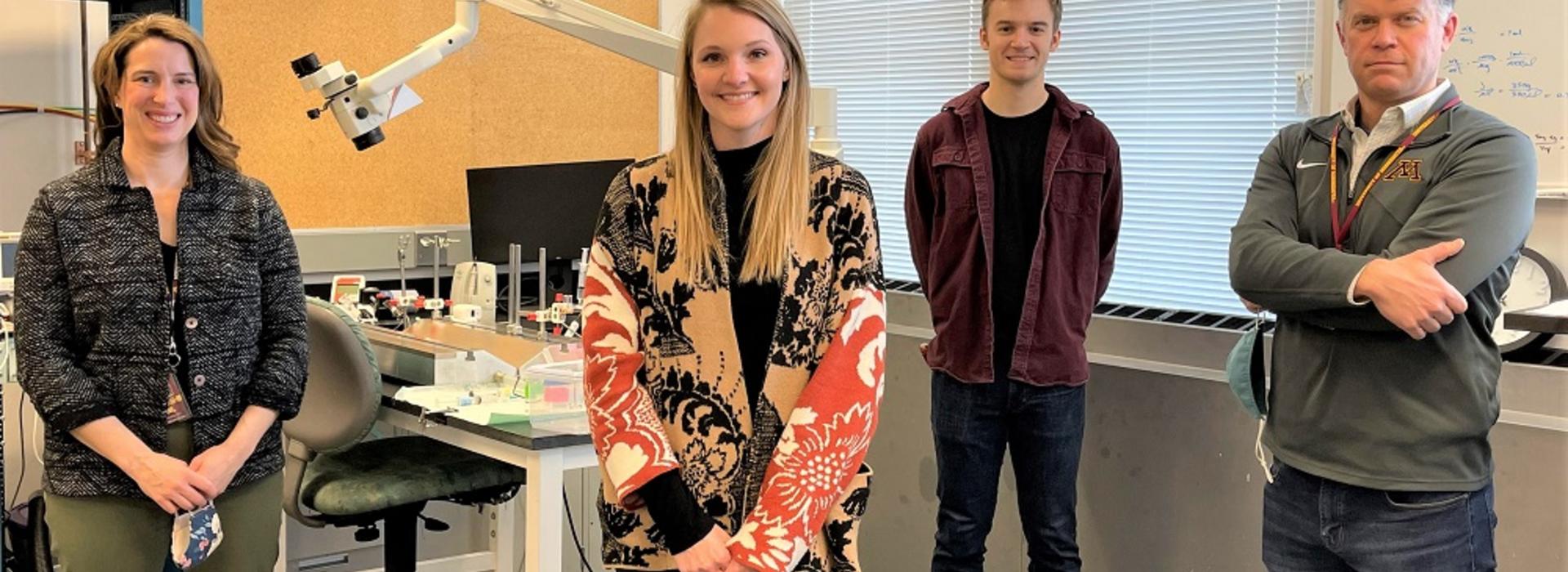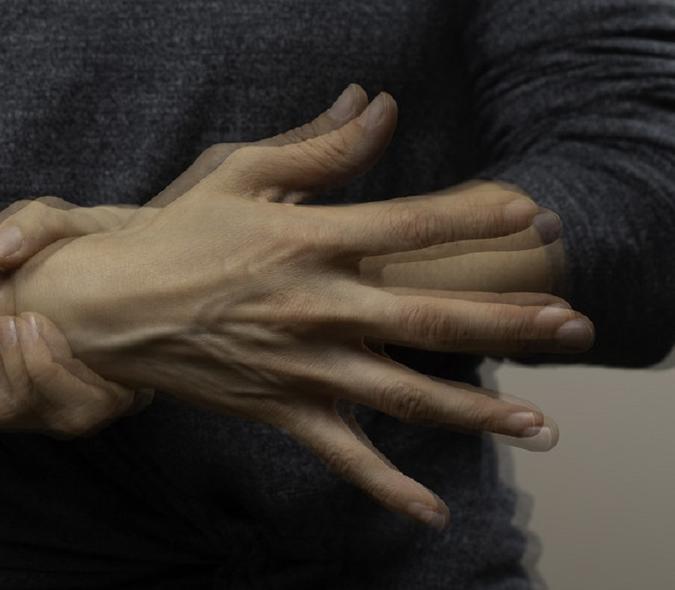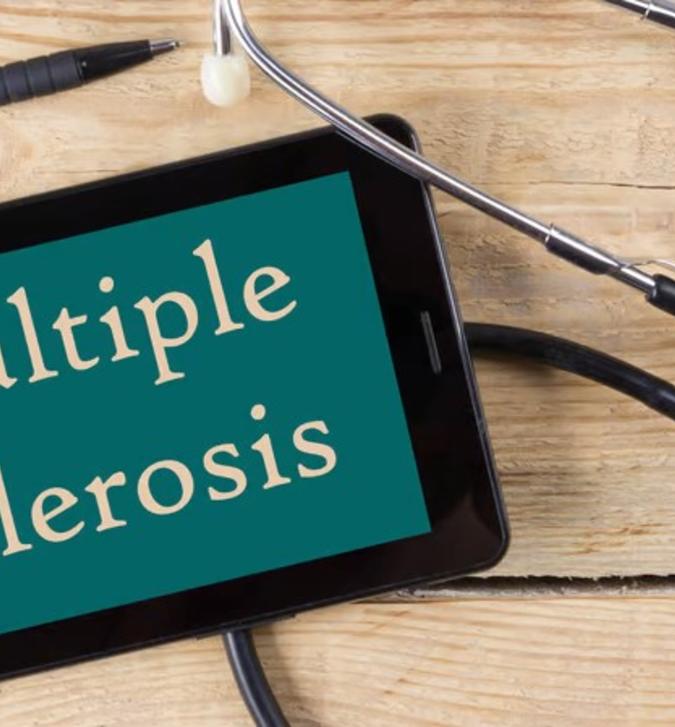
Research team using NIH RO1 Grant to explore estrogen’s role in respiratory neuroplasticity
Scientific discovery is about making connections. Often, those connections can be surprising.
Rehabilitation Medicine Department Assistant Professor Brendan Dougherty, PT, PhD, of the Physical Therapy Division, has made surprising connections through his research. Under a recently awarded National Institutes of Health RO1 Grant* titled, Estrogen Receptor Signaling in the Expression of Respiratory Motor Plasticity, he and co-investigator, Professor Dawn Lowe, PhD, of the Division of Rehabilitation Science, will continue to do so.
“With this RO1, we will lay the foundation for all the different research directions I envision for my lab,” said Dougherty. “It will provide the basic building blocks for everything else.”
Specifically, the $2.25M grant, which runs from 2021 to 2025, is enabling the research team to explore the mechanisms of how estrogen helps the respiratory system express neuroplasticity. Their work is some of the first of its kind in the nation.
What does plasticity mean in this context?
When Dougherty describes the research the team does, he often refers to “neuroplasticity.” “If you’re a Physical Therapy clinician treating someone with a spinal cord injury or a stroke, plasticity is central to what you’re trying to achieve,” he said. “Your goal is to provide therapeutic interventions that will induce changes to the central nervous system, enabling your patients to maximize their function. The lasting change in the central nervous system after a treatment that allow these improvements is plasticity.”
Though Dougherty’s team focuses on plasticity in the respiratory system, researchers have learned over time is that the stimulus used to induce plasticity (brief exposures to reduced inspired oxygen, or acute, intermittent hypoxia) does not appear specific to that system. “For instance, researchers can induce plasticity in the motor system that controls walking by exposing rats to acute, intermittent hypoxia as well,” Dougherty noted. “Therefore, our findings may have applications beyond the respiratory motor system, which is very exciting to think about.”
Why the estrogen connection?
Research has shown that estrogen plays a crucial role in helping the respiratory system express plasticity in both female and male rats. But how does estrogen do this? That is one of the key questions Dougherty’s research team wants to answer.
“The primary sex hormones, estrogen and testosterone, are created from the breakdown of cholesterol,” he explained. “In male rats, testosterone can be broken down into either dihydrotestosterone [DHT] or estrogen.” It was demonstrated in previous studies that estrogen, but not DHT, was sufficient to restore plasticity in male rats following castration, which significantly reduces levels of circulating testosterone. This suggested that that estrogen is key in male rats for induction of respiratory plasticity. But, does testosterone definitively have to be converted to estrogen to in order for males to express plasticity? “That’s one of the studies we’re working on now,” said Dougherty.
While estrogen creation is more straightforward in female rats, prior studies from Dougherty have shown that the female rats only express plasticity during certain stages of the estrus cycle, those with high levels of circulating estrogen.
An “aha” moment
“We looked at females during the proestrus [high] and estrus [low] phases,” said Dougherty. “We could only induce neuroplasticity during the proestrus phase. That was an aha moment for us.” To further explore these findings, removing the ovaries from the female rats prevented the expression of respiratory motor system plasticity as well, but plasticity could be restored with an estrogen supplement.
The global hypothesis is that estrogen signaling in the spinal cord is necessary to permit the expression of respiratory neuroplasticity, according to Dougherty. “The first few studies under this grant will be to determine whether this type of estrogen signaling is required for this process in normal males and females,” he said. “We want to define it and then we will look at whether estrogen works through the same mechanisms in males as in females. Is it necessary in both? Are the same receptors involved? Is the conversion of testosterone to estrogen required?
“In the future,” Dougherty continued, “we’ll look at whether the impact of aging, disease, changes in body mass, or injury, which also impact hormone levels, will affect our ability to induce neuroplasticity.”
Using their findings to maximize treatments
Dougherty sees his research as part of holistic approach to therapy treatments. For example, epidural stimulation is one current state-of-the-art treatment for patients with spinal cord injury that is being extensively studied (including here at UMN). Maximizing the effectiveness of a treatment such as epidural stimulation, however, may require researchers to pay more attention to things like sex hormone levels. “Can we supplement male patients with testosterone or female patients with estrogen to bring their levels back up to a point where the microenvironment in the spinal cord is maximally ready to receive epidural stimulation and express neuroplasticity,” Dougherty asks. Time will tell.
His U of M lab is one of the first groups in the nation to specifically dive into sex hormone signaling in the respiratory motor system. “Several other labs are looking at how we breathe but we’re one of the first focused on how sex hormones affect the motor output of the respiratory system,” he said. “It’s what sets us apart. The way we will figure all of this out is also unique and novel.”
More information about Dougherty’s research lab.
*A Research Project (R01) grant is an award made to support a discrete, specified, circumscribed project to be performed by the named investigator(s) in an area representing the investigator's specific interest and competencies, based on the mission of the National Institutes of Health.



